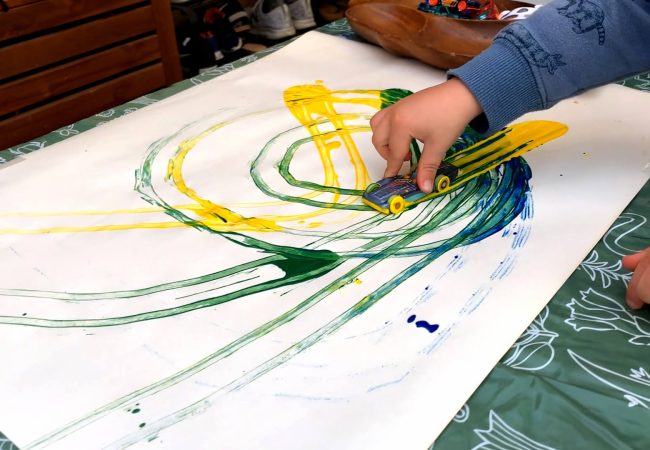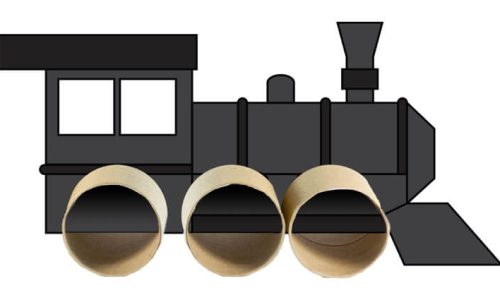My favourite thing about transportation songs is how beautifully they lend themselves to incidental play – even on the busiest of days! With some intention and playfulness, you can turn a transportation song into a rich moment of learning and cooperation.
Let’s take a train song, for example. It can be sung whilst on a train, when you see a train, while playing with a train or when you want to be a train! “Time to get in the car, let’s be a train as we walk out the door!” With this last point, you have improved the chances of cooperation from your child and attached additional learning to an everyday moment.
Transport songs are excellent for teaching children about the world around them whilst developing their cognitive and motor skills. The actions and melodies of the songs help with memory retention and provide moments of connected play for the parent and adult. These moments of genuine fun experienced by both adults and child help make the play more memorable and, in turn, more meaningful. This means, a child will need fewer play repetitions to learn the concept completely.

Explore Transportation!
This playlist is designed to help children explore different modes of transportation. Their sounds, movements, and different ways they inspire play and learning.
Play by stage.
When enjoying our Zoom Zoom Zoom content, use it to your advantage!
I’ve broken these tips into categories to support you in meeting your child where they are. Please note that you can use any of these tips at any age and stage of your child’s development, depending on their unique learning needs.
1: Beginner
Lap bounces, and tickles are a strong starting point for our beginner. They teach steady beat and give children the opportunity to feel the learning through their bodies. Research tells us that if a young child can keep a steady beat at a young age, they will have literacy success later in life. If you would also like to promote speech, try leaving words off the end of the song’s sentences. With some time, your child may begin to sing the missing words for you.
2: Intermediate
Collaborate with your child to support their creativity and gross motor development. Using our music and movement dancing scarf play, sing along and invite your child to suggest actions. Whatever they say goes! Sleeping to the moon, climbing to the moon, and even farting to the moon if they wish. No idea is too silly! By embracing you child’s silly you help them feel supported. Children who feel supported are more likely to cooperate with their parents during the day.
3: Advanced
Try learning sign language with your child. Challenge your child (and yourself) to learn the signs of Zoom Zoom Zoom with me. Learning sign language is a cognitive workout that can enhance communication whilst developing fine motor skills. Teaching your child signs is also a way you can promote empathy, diversity and inclusion in your home.
Teacher Tip!
Get noisy!
We love noisy play in early childhood because sound-making is excellent for language development. For example, transportation sounds such as car, train or aeroplane noises can help children develop their phonological awareness – the ability to recognise and manipulate the sounds in language. Some of these sounds are excellent vocal exercises for blending a child’s registers, such as the fire engine’s siren sound.

Andrew's Art Corner
Our print-at-home train (created by our graphic designer Dad, Andrew) can be used with our Big Black Train video and will excite those little transport enthusiasts.
Learning Resources
Compliment your Transportation learning at home with these open-ended resources at 15% OFF* from the Gumnut Music shop.
This months code: D7PTY3D7
*Exclusions may apply.











